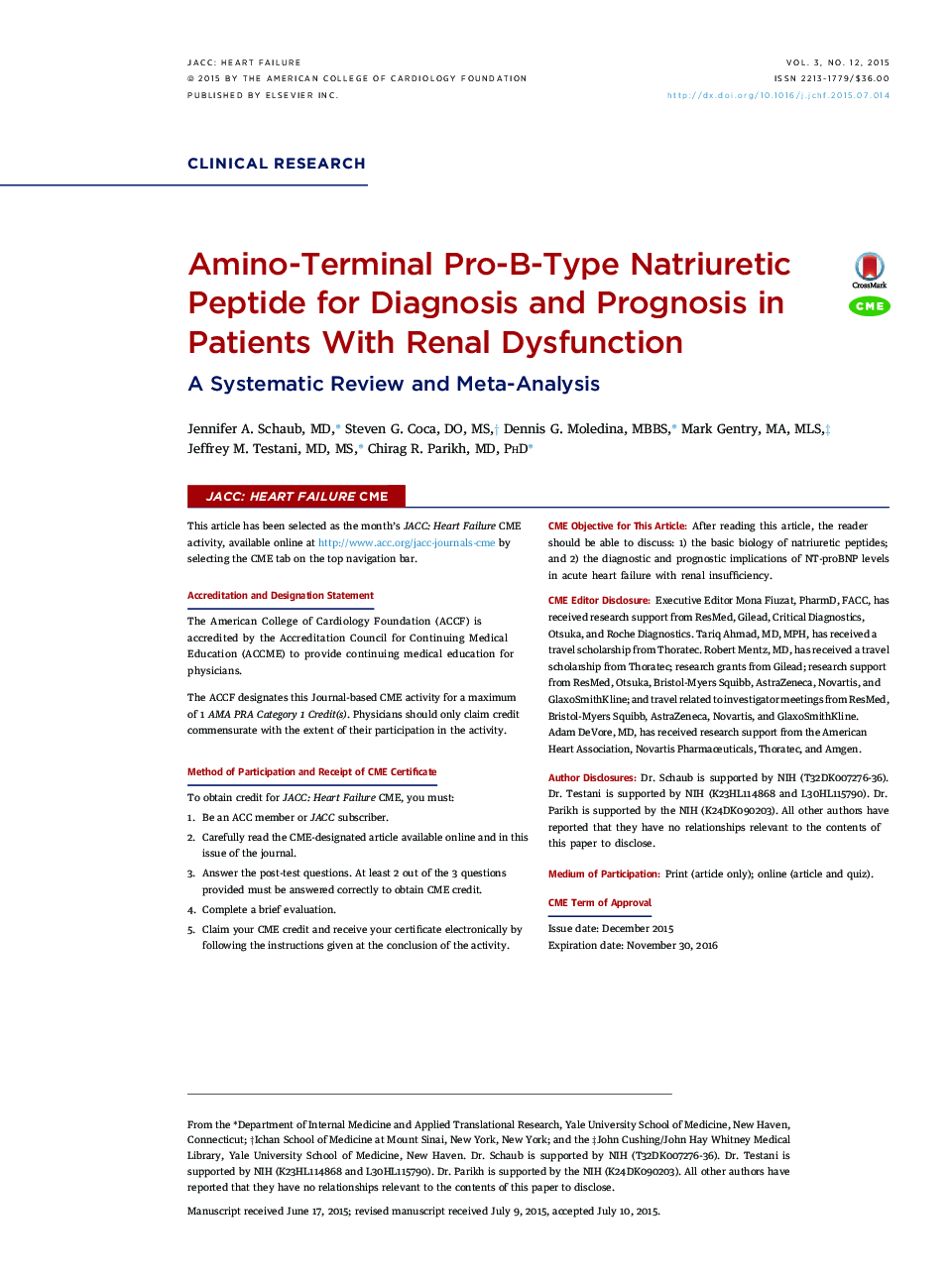| کد مقاله | کد نشریه | سال انتشار | مقاله انگلیسی | نسخه تمام متن |
|---|---|---|---|---|
| 2942434 | 1177122 | 2015 | 13 صفحه PDF | دانلود رایگان |

ObjectivesThis study sought to determine if amino-terminal pro-B-type natriuretic peptide (NT-proBNP) has different diagnostic and prognostic utility in patients with renal dysfunction.BackgroundPatients with renal dysfunction have higher NT-proBNP, which may complicate interpretation for diagnosis of acute decompensated heart failure (ADHF) or prognosis.MethodsWe searched MEDLINE and EMBASE through August 2014 for studies with a subgroup analysis by renal function of the diagnostic or prognostic ability of NT-proBNP.ResultsFor diagnosis, 9 studies were included with 4,287 patients and 1,325 ADHF events. Patients were mostly divided into subgroups with and without renal dysfunction by an estimated glomerular filtration rate of 60 ml/min/1.73 m2. In patients with renal dysfunction, the area under the curve (AUC) for NT-proBNP ranged from 0.66 to 0.89 with a median cutpoint of 1,980 pg/ml, while the AUC ranged from 0.72 to 0.95 with a cutpoint of 450 pg/ml in patients with preserved renal function. For prognosis, 30 studies with 32,203 patients were included, and mortality in patients with renal dysfunction (25.4%) was twice that of patients with preserved renal function (12.2%). The unadjusted pooled risk ratio for NT-proBNP and mortality was 3.01 (95% confidence interval [CI]: 2.53 to 3.58) in patients with preserved renal function and was similar in patients with renal dysfunction (3.25; 95% CI: 2.45 to 4.30). Upon meta-regression, heterogeneity was partially explained if patients with heart failure or coronary artery disease were enrolled.ConclusionsNT-proBNP retains utility for diagnosis of ADHF in patients with renal dysfunction with higher cutpoints. Elevated NT-proBNP confers a worse prognosis regardless of renal function.
Journal: JACC: Heart Failure - Volume 3, Issue 12, December 2015, Pages 977–989